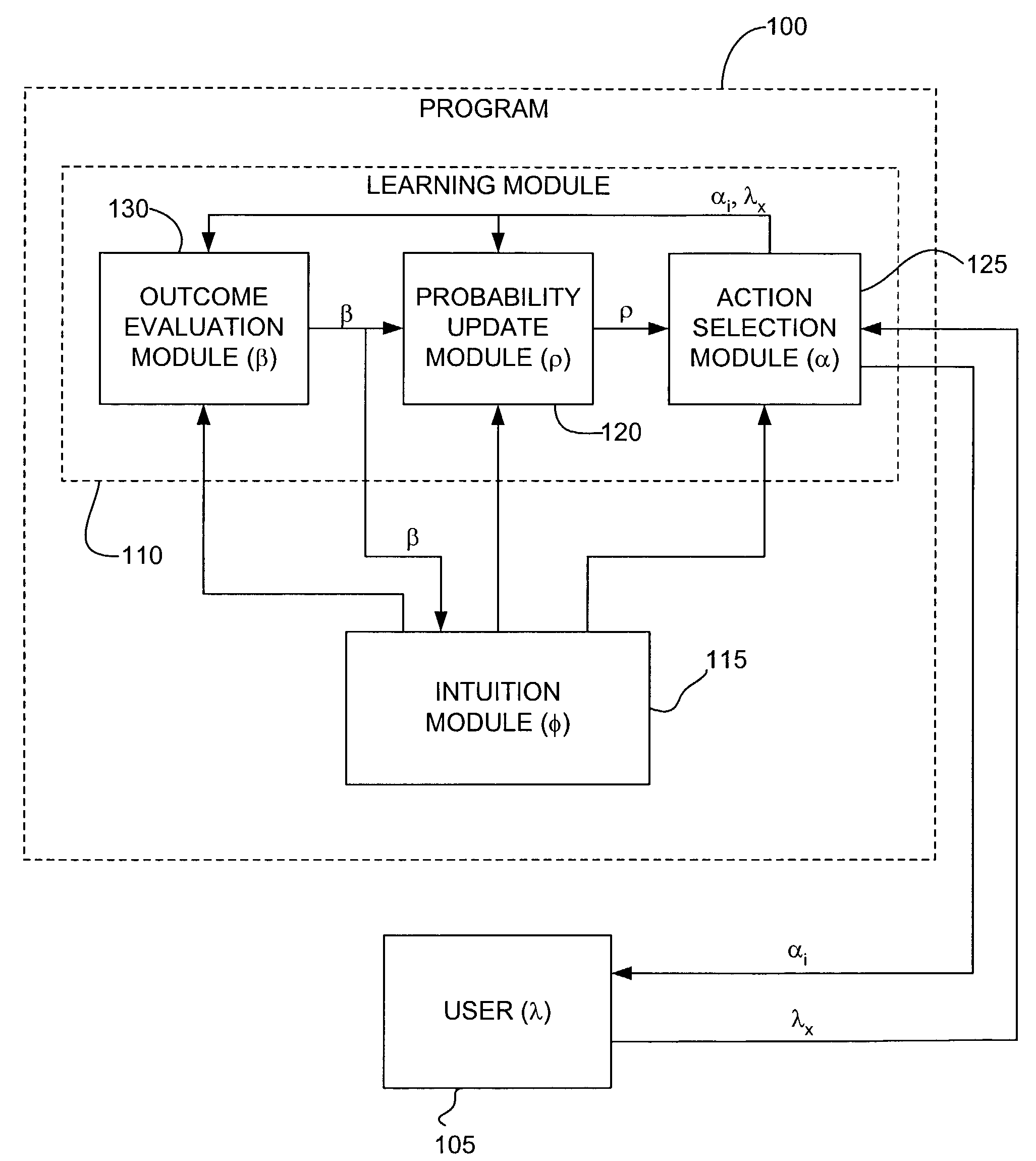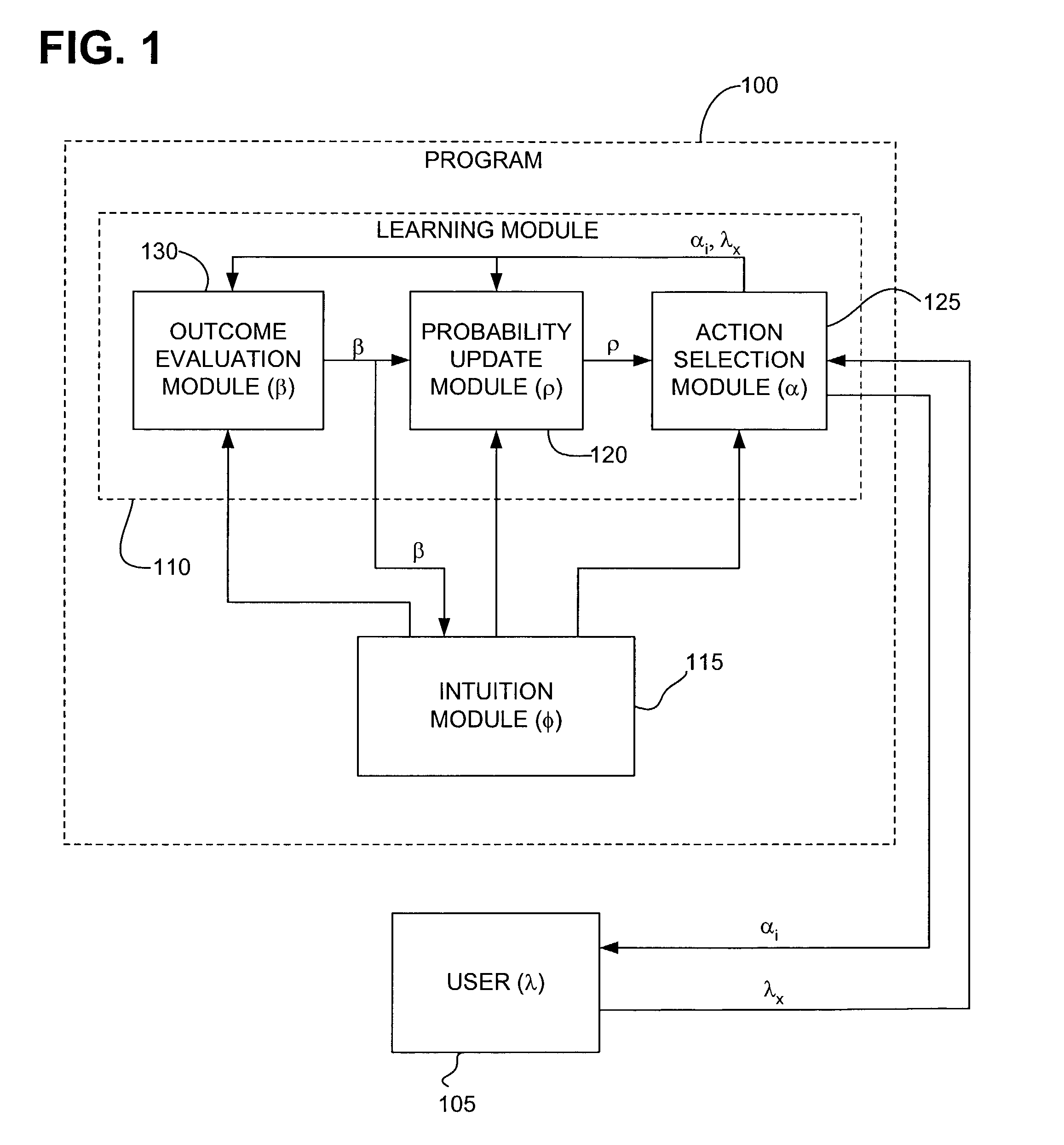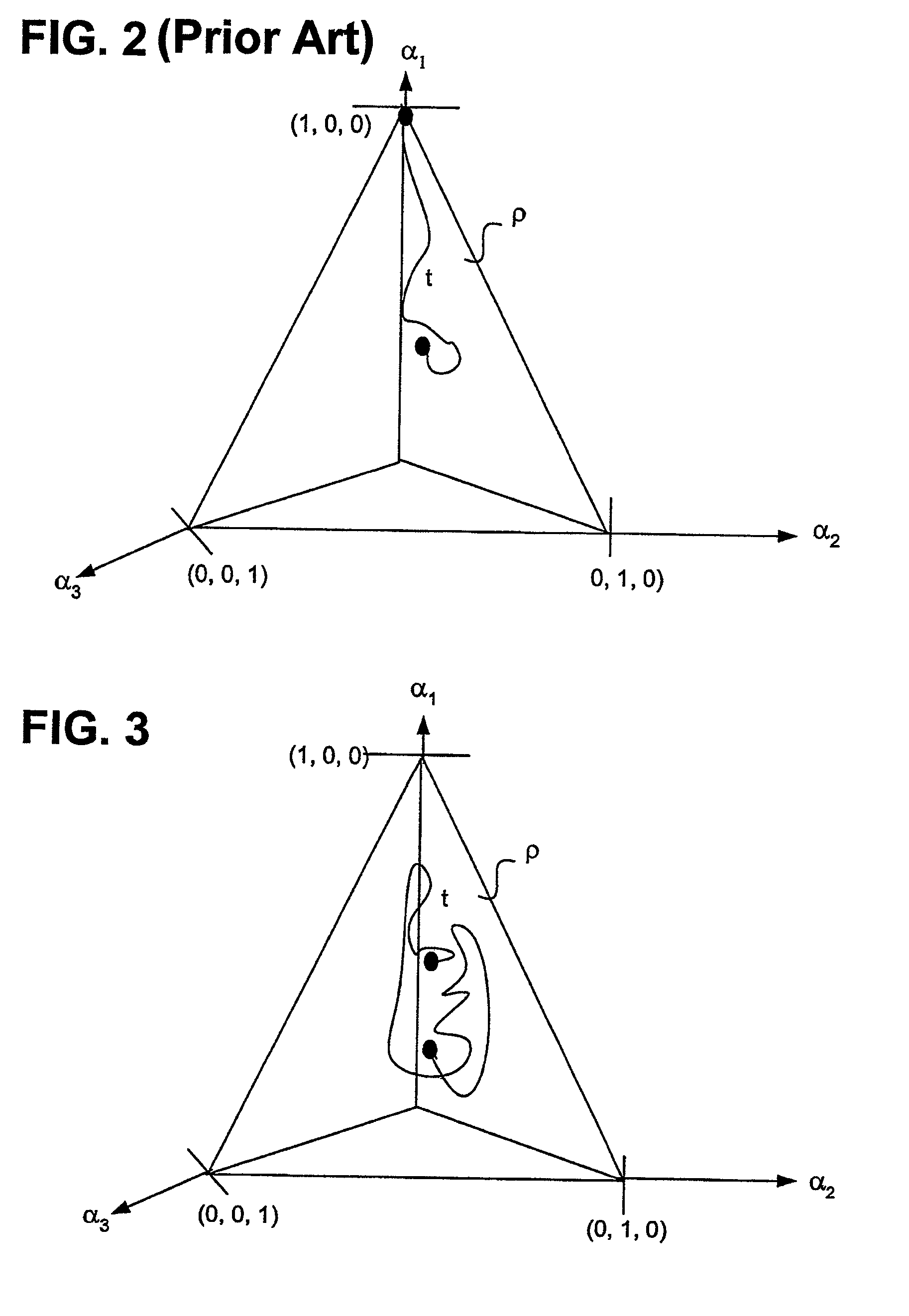Processing device with intuitive learning capability
a processing device and learning capability technology, applied in the field of processing devices with intuitive learning capability, can solve the problems of slow response speed, high cost, and increased processing requirements, and achieve the effect of enhancing the performance of these other technologies and improving the performance of most computer applications
- Summary
- Abstract
- Description
- Claims
- Application Information
AI Technical Summary
Benefits of technology
Problems solved by technology
Method used
Image
Examples
Embodiment Construction
Generalized Single-User Program (Single Processor Action-Single User Action)
[0093]Referring to FIG. 1, a single-user learning program 100 developed in accordance with the present inventions can be generally implemented to provide intuitive learning capability to any variety of processing devices, e.g., computers, microprocessors, microcontrollers, embedded systems, network processors, and data processing systems. In this embodiment, a single user 105 interacts with the program 100 by receiving a processor action αl from a processor action set a within the program 100, selecting a user action λl from a user action set A based on the received processor action αl, and transmitting the selected user action λl to the program 100. It should be noted that in alternative embodiments, the user 105 need not receive the processor action αl to select a user action λl, the selected user action λl need not be based on the received processor action αl, and / or the processor action αl may be selecte...
PUM
 Login to View More
Login to View More Abstract
Description
Claims
Application Information
 Login to View More
Login to View More - R&D
- Intellectual Property
- Life Sciences
- Materials
- Tech Scout
- Unparalleled Data Quality
- Higher Quality Content
- 60% Fewer Hallucinations
Browse by: Latest US Patents, China's latest patents, Technical Efficacy Thesaurus, Application Domain, Technology Topic, Popular Technical Reports.
© 2025 PatSnap. All rights reserved.Legal|Privacy policy|Modern Slavery Act Transparency Statement|Sitemap|About US| Contact US: help@patsnap.com



